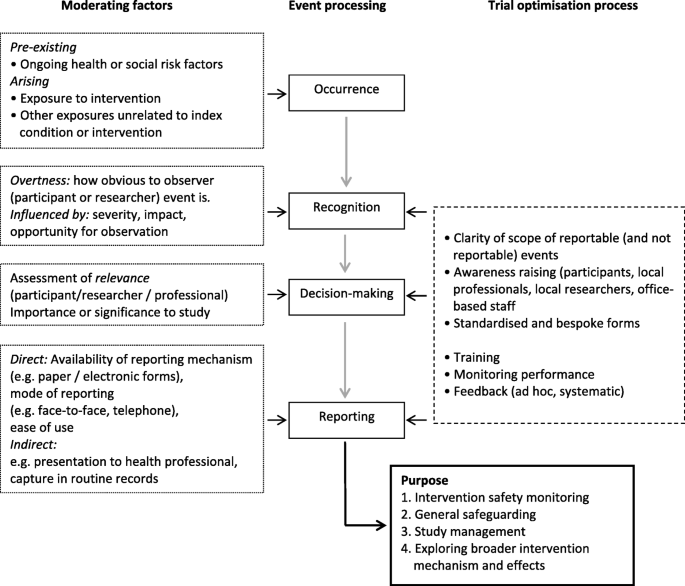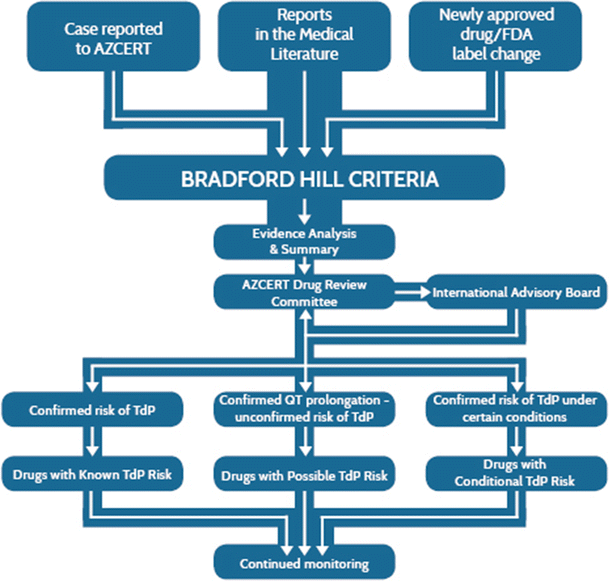

- When evaluating the causality of an adverse event for free#
- When evaluating the causality of an adverse event software#
The ability to classify the severity of ADRs will provide a mechanism for the health care workers and authorities to identify the problem areas and improve the intervention for patient care that would reduce the burden of ADRs. Similar to causality assessment, severity assessment of ADRs are also crucial in epidemiological studies. The term severity in ADRs is used to describe the intensity of the adverse drug reaction. Assessment of ADRs causality will give an advantage in the ability to classify the relationship, improve scientific evaluation for each individual ADR, and thus enable for an early warning system for clinicians, pharmacists, and health regulators. It assesses the causal connection between the drugs and their adverse effects. Īccording to the WHO, ADR causality assessment is “a method by which it estimates the relationship concerning the agent (which is the drug) and the adverse reactions”. Research in this area is needed to keep up with the increasing number of ADRs and integrate new knowledge with the rapidly advancing technology. However, the use of apps in health care services does not seem as extensive as compared with other services such as social or public services. It also improves quality and effectiveness of services to the benefit of patients. Mobile technology facilitates efficient delivery of services to patients.
When evaluating the causality of an adverse event software#
Previous studies have shown that the combined use of mobile technology and mobile apps software in health care offer various benefits to many parties including health care professionals, patients, management, and even stakeholders. ADRs have been estimated to cause 3% of all deaths in the general population and up to 5% of deaths in hospitalized patients. Similar numbers are seen in adult patients. Previous studies have shown that ADRs were the cause of 3% of all hospital admissions in the pediatric population and that 10% of children suffer an ADR while in hospital. The World Health Organization (WHO) defines an ADR as a response to a drug that is noxious and unintended and occurs at doses normally used in man for prophylaxis, diagnosis, or therapy of disease, or for modification of physiological function. They will also contribute to future research on ADRs, thus increasing drug safety.Īdverse drug reactions (ADRs) cause significant mortality and morbidity in patients. The usage of these apps will improve detection, assessment, and avoidance of future ADRs. From the survey, the mean SUS score was 70.9 based on 26 responses from the pediatric ward of Hospital Ampang, Malaysia.Ĭonclusions: The developed apps received an overall acceptable usability among health care professionals.

When evaluating the causality of an adverse event for free#
Results: These apps are available for download through Google Play Store for free since January 2015. The apps were named “Adverse Drug ReactionCausality,” “Adverse Drug ReactionSeverity,” and “Adverse Drug RxnPreventability.” A survey was conducted using the System Usability Scale (SUS) to assess the usability of the developed apps among health care professionals.

They are the Liverpool ADRs Causality Assessment Tool, Hartwig’s Severity Assessment Scale, and the Modified Schumock and Thronton Preventability Scale. Methods: We designed mobile apps using validated assessment tools for ADRs. Objective: The aim of this study was to develop mobile apps in assisting clinical decision in ADR assessments of causality, severity, and preventability using validated tools.

Improved assessment of ADRs to identify the causal relationship, the severity, and the preventability will aid ADRs prevention or reduce patient burden. Tengku Amatullah Madeehah Tengku Mohd, MBChB, MSc, MPHĮmail: Adverse drug reactions (ADRs) cause significant morbidity and mortality.


 0 kommentar(er)
0 kommentar(er)
